|
presents THIS DAY IN GAY HISTORY based on: The White Crane Institute's 'Gay Wisdom', Gay Birthdays, Gay For Today, Famous GLBT, glbt-Gay Encylopedia, Today in Gay History, Wikipedia, and more …
Collected by Ted November 15 [{(o)}]|[{(o)}]|[{(o)}]|[{(o)}]| [{(o)}]|[{(o)}] 1636 – A set of laws was enacted for the Plymouth Colony. Eight offences were deemed punishable by death, including sodomy.
Acquiring property through marriage, Hammond ultimately owned 22 square miles, several plantations and houses, and more than 300 enslaved people. Through his wife's family, he was a brother-in-law of Wade Hampton II and uncle to his children, including Wade Hampton III. When the senior Hampton learned that Hammond had raped his four Hampton nieces as teenagers, he made the scandal public. The publicizing of his crimes was initially thought to have derailed Hammond's career but he later was elected to the United States Senate. Born in Newberry County, South Carolina, to Elisha and Catherine Fox (Spann) Hammond, he graduated from South Carolina College in 1825, where he was a member of the Euphradian Society, and went on to teach school, write for a newspaper, and study law. He was admitted to the bar in 1828 and started a practice in Columbia, South Carolina. He established a newspaper there in support of nullification. Hammond "secured his financial independence" by marrying Catherine Elizabeth Fitzsimmons, who was a shy, plain 17-year-old with a substantial dowry.[1] He became a wealthy man through this marriage and entered the planter class. He ultimately owned 22 square miles (57 km2) of land, a number of plantation houses, and more than 300 enslaved persons Hammond's Secret and Sacred Diaries (not published until 1989) described, without embarrassment, his sexual abuse over two years of four teenage nieces, daughters of his sister-in-law Ann Fitzsimmons and her husband Wade Hampton II. He blamed his behavior on what he described as the seductiveness of the "extremely affectionate" young women. The scandal "derailed his political career" for a decade to come after Wade Hampton III publicly accused him in 1843 when Hammond was governor. He was "ostracized by polite society" for some time, but in the late 1850s, he was nonetheless elected by the state legislature as a U.S. senator. Hammond's damage to the girls was far-reaching. Their social prospects were destroyed. Considered to have tarnished social reputations as a result of his behavior, none of the four ever married. Hammond was known to have repeatedly raped two female slaves, one of whom may have been his own daughter. He raped the first slave, Sally Johnson, when she was 18 years old. Such behavior was not uncommon among white men of power at the time; their mixed-race children were born into slavery and remained there unless the fathers took action to free them. Later, Hammond raped Sally Johnson's daughter, Louisa, who was a year old baby when he bought her mother; the first rape apparently occurred when Louisa was 12; she also bore several of his children. His wife left him for a few years after he repeatedly raped the enslaved girl, taking their own children with her. She later returned to her husband. In the late 20th century, historians learned that Hammond as a young man had a homosexual relationship with a college friend, Thomas Jefferson Withers, which is attested by two sexually explicit letters sent from Withers to Hammond in 1826. The letters, which are held among the Hammond Papers at the University of South Carolina, were first published by researcher Martin Duberman in 1981; they are notable as rare documentary evidence of same-sex relationships in the antebellum United States.
1873 – Dr. Sara Josephine Baker, pioneering public health physician, born (d.1945); or Jo, as she preferred, was born in Poughkeepsie, New York in 1873 to a middle class Unitarian or Quaker family. When she was sixteen, her father and brother died from typhoid, which left her family with no means of support. Early in her career, she had helped to twice catch Mary Mallon, also known as Typhoid Mary. Mary Mallon was the first known healthy carrier of typhoid who infected countless people through her job as a cook. Mallon was not the only repeat offender in being a typhus-contagious cook, but she was the only one put in isolation for the rest of her life. It may have been relevant that the other offenders were male, or that they were not of Irish heritage. Josephine Baker was becoming famous, so much so that New York University Medical School asked her to lecture there on children's health, or 'child hygiene', as it was known at the time. Baker said she would if she could also enroll in the School. The School had to give in because there was no one else who could give the lectures. So in 1917 Baker graduated with a doctorate in public health. After the United States entered WWI, Baker became even better known. Most of this publicity was generated from her comment to a NY Times reporter. She told him that it was safer to be on the front lines than to be born in the United States because the soldiers died at a rate of 4%, whereas babies died at a rate of 12%. She was able to start a lunch program for school children due to the publicity this comment brought. Over the years of her career, she made intelligent use of the press to advance the goals she had for public health. She made use of the publicity around the high rate of young men being declared 4F (not eligible for draft due to poor health) as a motivating factor for support in her work on improving the health of children. Josephine Baker was now known across the world. She was offered a job in London as health director of public schools, a job in France taking care of war refugees, and a job in the United States as Assistant Surgeon General. Baker became the first woman to hold a federal government position when she accepted the position as Assistant Surgeon General of the United States. In 1923 she retired, but she didn't stop working. Josephine Baker became the first woman to be a professional representative to the League of Nations when she represented the United States in the Health Committee. Many government positions, departments, and committees were created because of her work including the Federal Children's Bureau and Public Health Services (now the Department of Health and Human Services) and child hygiene departments in every state. She was also active in many groups and societies including over twenty-five medical societies and the New York State Department of Health. She also became the President of the American Medical Women's Association and wrote 250 articles (both professional and for the popular press), 4 books, and her autobiography before her death in 1945. Josephine Baker wrote very little about her personal life, however her partner for much of the later part of her life was Ida Alexa Ross Wylie, a novelist and essayist from England, and self-identified as a 'woman-oriented woman'. I.A.R. Wylie is best know for the novel "The Daughter of Brahma", and "Life with George", an autobiography. When Baker retired in 1923, she started to run their household while writing her autobiography. In 1935, Baker and Wylie decided to move to Princeton, NJ, together with their friend Louise Pearce, M.D.. Pearce was a biological researcher at the Rockefeller Institute, working on animal models for trypanosoma (African sleeping sickness) and syphilis, and the testing of treatments. Pearce later became the President of the Women's Medical College of Philadelphia. While Baker and Pearce left little documentation of their personal lives, Wylie was open about her orientation. But she did not identify either Baker or Pearce in her writings. Wylie's papers, including some personal letters, were donated to the Women's Medical College of Philadelphia (now the Medical College of Philadelphia), where they are now available in the college's archives.
1919 – Paul Moore, Jr. (d.2003) was a bishop of the Episcopal Church and served as the 13th Bishop of New York from 1972 to 1989. During his lifetime, he was perhaps the best known Episcopal cleric in the United States, and among the best known of Christian clergy in any denomination. Moore joined the Marine Corps in 1941. He was a highly decorated Marine Corps captain, a veteran of the Guadalcanal Campaign during World War II earning the Navy Cross, a Silver Star and a Purple Heart. Returning home after the War, Moore was ordained in 1949 after graduating from the General Theological Seminary in New York City. Moore was named rector of Grace Church Van Vorst, an inner city parish in Jersey City, New Jersey, where he served from 1949 to 1957. There he began his career as a social activist, protesting inner city housing conditions and racial discrimination. He and his colleagues reinvigorated their inner city parish and were celebrated in the Church for their efforts. In 1957, he was named Dean of Christ Church Cathedral in Indianapolis, Indiana. Moore introduced the conservative Midwestern capital to social activism through his work in the inner city. Moore served in Indianapolis until he was elected Suffragan Bishop of Washington, D.C., in 1964. During his time in Washington he became nationally known as an advocate of civil rights and an opponent of the Vietnam War. He knew Martin Luther King, Jr., and marched with him in Selma and elsewhere. In 1970, he was elected as coadjutor and successor to Bishop Horace Donegan in New York City. He was installed as Bishop of the Diocese of New York in 1972 and held that position until 1989. Moore was widely known for his liberal activism. Throughout his career he spoke out against homelessness and racism. He was an effective advocate of the interests of cities, once calling the corporations abandoning New York "rats leaving a sinking ship". He was the first Episcopal bishop to ordain an openly homosexual woman as a priest in the church. In his book, Take a Bishop Like Me (1979), he defended his position by arguing that many priests were homosexuals but few had the courage to acknowledge it. His first wife, Jenny McKean Moore died of colon cancer in 1973. Eighteen months later Moore married Brenda Hughes Eagle, a childless widow twenty two years his junior. She died of alcoholism in 1999. It was she who discovered his bisexual infidelity, around 1990, and made it known to his children, who kept the secret, as he had asked them to, until Honor Moore's revelations in 2008. Honor Moore, the oldest of the Moore children and a bisexual, revealed that her father was himself bisexual with a history of gay affairs in a story she wrote about him in the March 3, 2008 issue of The New Yorker and in the book The Bishop's Daughter: A Memoir. In addition, she described a call she received six months after her father's death from a man, identified in the article by a pseudonym, who was the only person named in Moore's will who was unknown to the family. Honor Moore learned from the man that he had been her father's longtime gay lover and that they had traveled together to Patmos in Greece and elsewhere.
Hitchhiking, he set out to conquer the world. In Miami, he met his fate: Fernand Legros. They began an uneven relationship. Legros occasionally accused Lessard of infidelity, although he himself slept with other men. An unscrupulous art dealer, Legros quickly discovered the innate talent of Réal Lessard who painted, without knowing it, in the manner of great Fauves fromturn of the century. Promising an art show that would never happen, Legros sold Lessard's paintings, without the knowledge of the artist, as authentic Dufy, Matisse, Derain, Van Dongen, Modigliani and many others. He managed to get everyone in his pocket – experts, beneficiaries, and even widows of the painters. The world was awash with raw Réal Lessard. 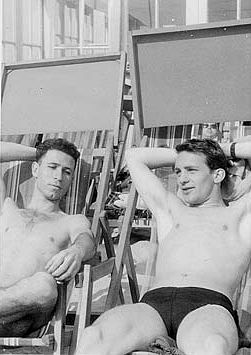 Reál and Legros on the beach at Cannes Lessard discovered the scam but dared not speak. It will not take long for the Association of Art Dealers of Americans to intervene and the affair would culminate in a trial. Real was cleared but he had to prove that thousands of paintings, dating from his first from his meeting with Legros, were from his brush.
1941 – Holocaust SS chief Heirich Himmler orders the arrest and deportation to concentration camps of all homosexuals in Germany, with the exception of certain top Nazi officials. He also announced a decree that any member of the Nazi SS or the police who had sex with another man would be put to death.
1952 – ONE, the official publication of the Mattachine Society, Articles of Incorporation signed in the Los Angeles law office of Eric Julber. In January 1953 ONE, Inc. began publishing ONE Magazine, the first U.S. pro-gay publication, and sold it openly on the streets of Los Angeles. In October 1954 the U.S. Post Office Department declared the magazine 'obscene'. ONE sued, and finally won in 1958, as part of the landmark First Amendment case, Roth v United States. The magazine continued until 1967. ONE also published ONE Institute Quarterly (now the Journal of Homosexuality). It began to run symposia, and contributed greatly to scholarship on the subject of same-sex love (then called homophile studies'). ONE readily admitted women, and Joan Corbin (as Eve Elloree), Irma Wolf (as Ann Carrl Reid), Stella Rush (as Sten Russell), Helen Sandoz (as Helen Sanders), and Betty Perdue (as Geraldine Jackson) were vital to its early success. ONE and Mattachine in turn provided vital help to the Daughters of Bilitis in the launching of their newsletter The Ladder in 1956. The Daughters of Bilitis was the counterpart lesbian organization to the Mattachine Society, and the organizations worked together on some campaigns and ran lecture-series. Bilitis came under attack in the early 1970s for 'siding' with Mattachine and ONE, rather than with the new separatist feminists. In 1965, ONE separated over irreconcilable differences between ONE's business manager Dorr Legg and ONE Magazine editor Don Slater. After a two-year court battle, Dorr Legg's faction retained the name "ONE, Inc." and Don Slater's faction retained most of the corporate library and archives.
1954 – Poet and Carl Sandburg Prize winner, Rane Ramón Arroyo born (d.2010); Arroyo was an American poet, playwright, and scholar of Puerto Rican heritage descent who wrote numerous books and received many literary awards. He was a professor of English and Creative Writing at the University of Toledo in Ohio. His work deals extensively with issues of immigration, Latino culture and homosexuality. Arroyo was out Gay and frequently wrote self-reflexive, autobiographical texts. He was the long-term partner of the American poet Glenn Sheldon. He published ten books of poems, a book of short stories, and a collection of selected plays. Arroyo said: "No one is more surprised than I at being read in my lifetime." Arroyo's most recent books include "The Buried Sea: New & Selected Poems" , and "The Sky's Weight." "Midwest Challenge" was nominated for a 2009 Pushcart Prize.
The Umbrella Class assignment: bring in an object that tells your life story. Friends bought a music box, a painting of a cowboy being tamed by a mountain, a jeweled Buddha, but I was poor and had to risk being modest. Then I saw the broken umbrella, turned it inside out and exposed its ribs. There was a pun in it, rain and Rane, but the teacher said, how sad is your life? The other students nodded for their grades, but I opened up the umbrella, holding it by what was left of the handle, and it blossomed before the astonished class. Once again, when dismissed, I made magic and I got an A for seeing among the blind. - Rane Ramón Arroyo
1961 – The Washington, D.C. chapter of the Mattachine Society is formed by activists Jack Nichols and Frank Kameny who is elected president.
He won an Independent Spirit Award in 1999 for Best Debut Performance for his role in Smoke Signals, and a Los Angeles Outfest award in 2002 for his role in Fancydancing. In Canada, Adams has acted primarily in television, including roles in The Beachcombers, Da Vinci's Inquest, Neon Rider, These Arms of Mine, Da Vinci's City Hall, The L Word, and Wolf Canyon, and stage roles in Lear and Dry Lips Oughta Move to Kapuskasing. He also appeared in the documentary film Just Watch Me: Trudeau and the 70's Generation, speaking about his own experience as a young gay First Nations man growing up in Canada during the Trudeau era. His plays, including Dreams of Sheep, Snapshots, Dirty Dog River and Janice's Christmas, have been produced across Canada and internationally. Adams has also worked extensively with First Nations health programs in Canada, including HIV/AIDS education and alcohol and drug abuse treatment. In 2002, Adams completed a medical degree at the University of Calgary. He now practices family medicine in Vancouver, and serves as director of the Aboriginal Health program in the University of British Columbia's faculty of medicine. In April 2007, Adams was appointed the first-ever Aboriginal Health Physician Advisor for the province of British Columbia. Since 2014 Dr. Adams has been Chief Medical Officer with the First Nations Health Authority in British Columbia; in this capacity he works closely with government partners on population and public health issues. He has been in the spotlight in this role since the beginning of the COVID-19 pandemic, particularly in trying to convince indigenous people of the need for vaccination.
1967 – François Ozon is a French film director and screenwriter whose films are usually characterized by sharp satirical wit and a freewheeling view on human sexuality, particularly gay, bi, and lesbian sexuality. Ozon is himself openly gay. He has achieved international acclaim for his films 8 femmes (2002) and Swimming Pool (2003). Ozon is considered to be one of the most important French film directors in the new “New Wave” in French cinema. Ozon often features LGBT people in his films. Some examples include:
Klinck moved to Toronto at age 18 to study theatre at York University, but dropped out to focus on his career. In 1996, his novel Tacones (High Heels) was the winner of the Three-Day Novel Contest, and was published by Anvil Press to strong reviews in the Toronto Star and Quill and Quire. Klinck also collaborated with John Palmer and Jaie Laplante on the screenplay for the 2004 film Sugar, which garnered a nomination for Best Adapted Screenplay at the 25th Genie Awards, and he was a columnist for fab until 2005. He wrote an online only column for Xtra! called "Sex Play" in 2009, and a column called "Porndoggy" in the same publication for most of 2010. His writing has been published in the National Post, Saturday Night and Bil Bo K (Belgium). Klinck and his business partner Mandy Goodhandy have launched several sex businesses in the Toronto area, including a transgender strip club, "The Lounge", an adult DVD production company, "Mayhem North", and a porn site, "Amateur Canadian Guys". In 2006 they opened a pansexual nightclub, "Goodhandy's", located in downtown Toronto. Klinck has also worked as a professional BDSM dominant, and has appeared on the television series KinK. With Goodhandy, Klinck was chosen to be the Grand Marshall of the Pride Toronto 2010 parade.
1989 – Massachusetts becomes the second U.S. state to pass a statewide gay rights law.
1992 – Thirty-five members of The Cathedral Project, a gay Roman Catholic group, demonstrated in New York City at St. Patrick's Cathedral to protest a Vatican directive urging bishops to oppose laws banning anti-gay bias.
1995 – The Florida Baptist state convention approved a resolution to encourage members to boycott the Walt Disney Co. because of the company's extension of domestic partner benefits to its gay and lesbian employees.
1999 – The Washington Times claims George W. Bush ensured conservative supporters that he would not knowingly appoint any homosexuals as ambassadors or department heads in his administration if elected president.
The day after his marriage was announced in the media, Nebbeling was dropped from cabinet in a shuffle. The government stated that the timing was coincidental and that there was no prejudicial motive behind this, as Nebbeling was openly gay at the time of his election. Nebbeling and Holmberg are both immigrants to Canada, Nebbeling from the Netherlands and Holmberg from Sweden.
2004 – New Jersey Governor Jim McGreevey leaves office, three months after resigning due to a Gay extra-marital affair. State Senator Richard Codey takes over as interim governor. McGreevey has gone on to move in with a man and is studying in an Episcopal seminary.
[{(o)}]|[{(o)}]|[{(o)}]|[{(o)}]| [{(o)}]|[{(o)}] |
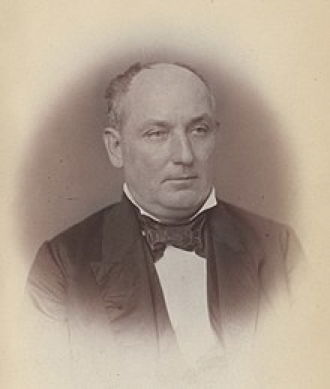
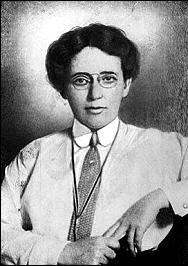
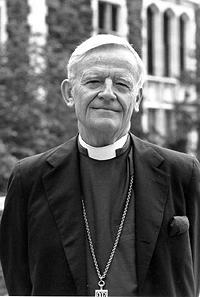
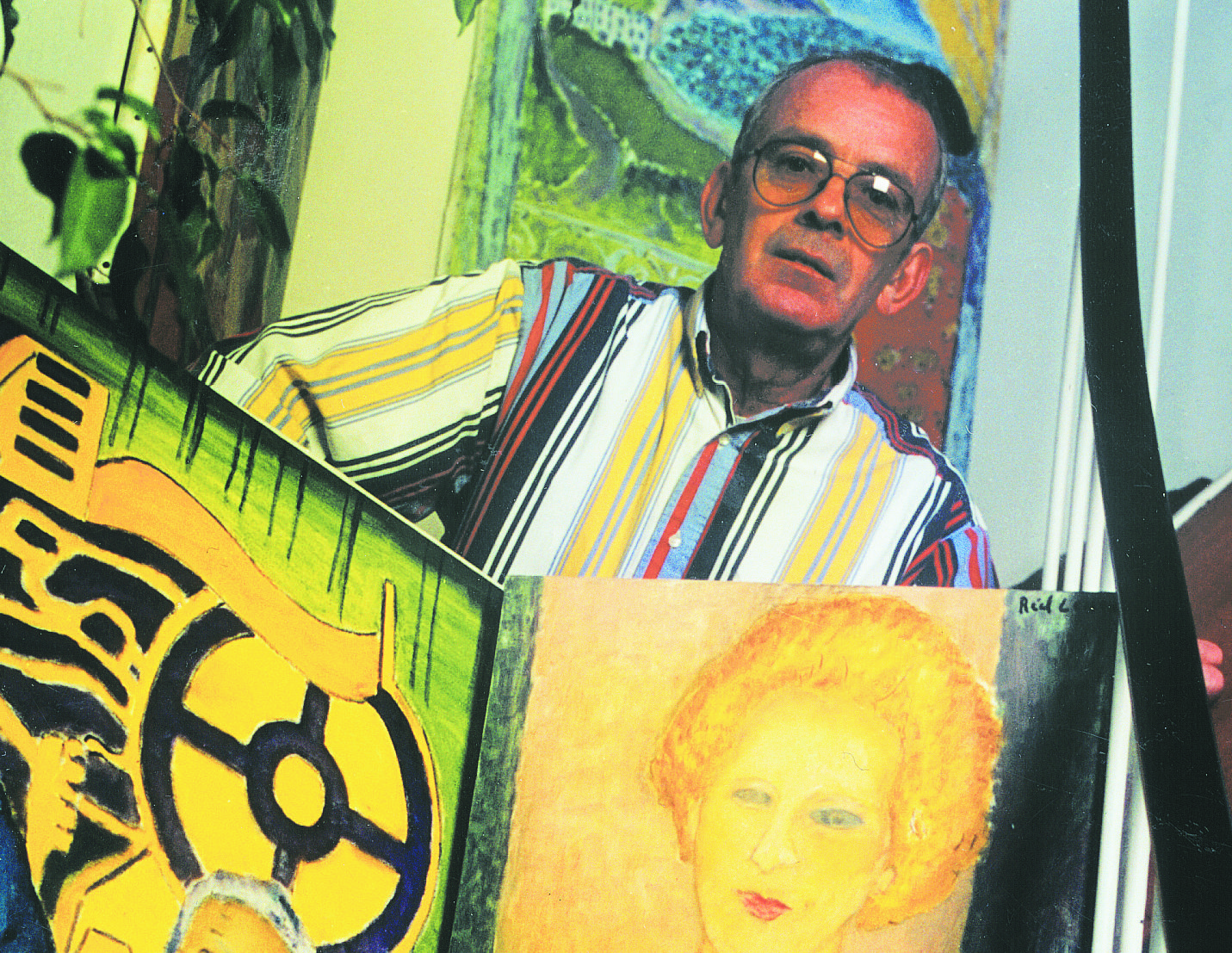

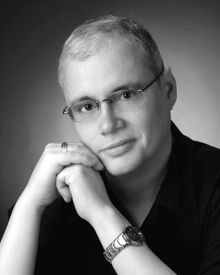
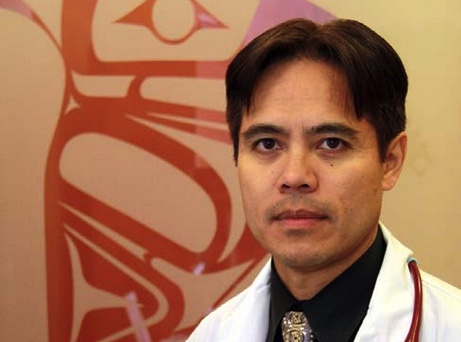
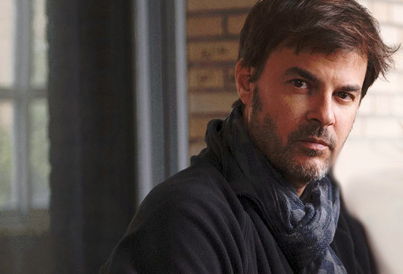
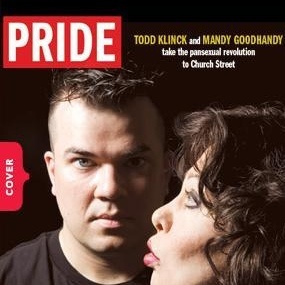
 Ted Nebbeling & Jan Holmberg
Ted Nebbeling & Jan Holmberg